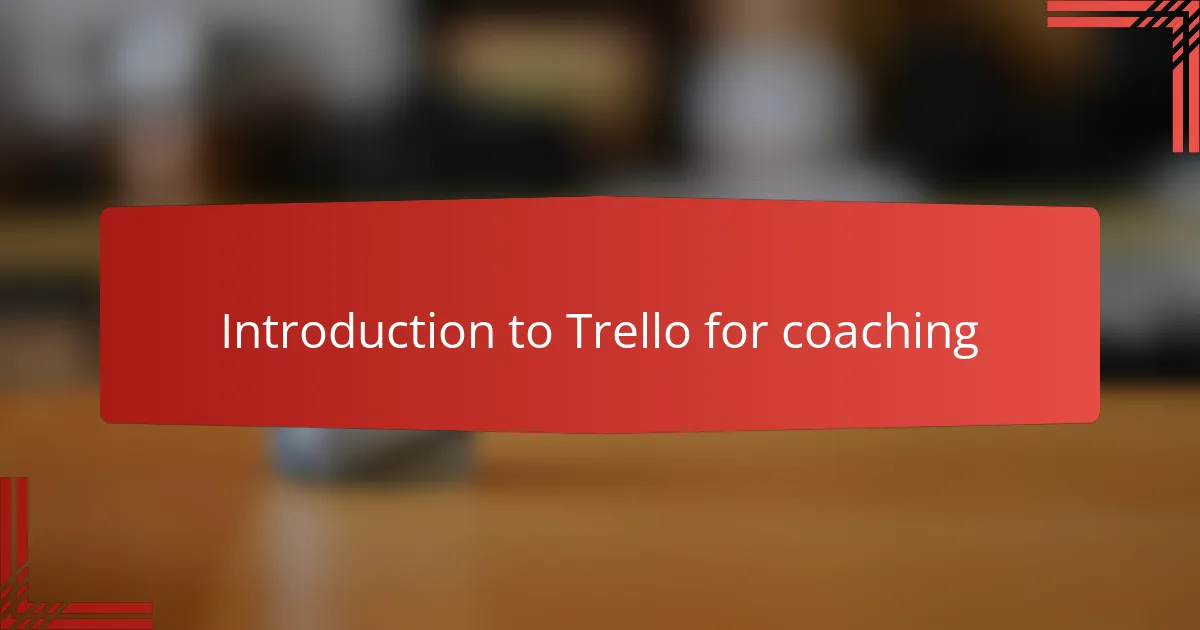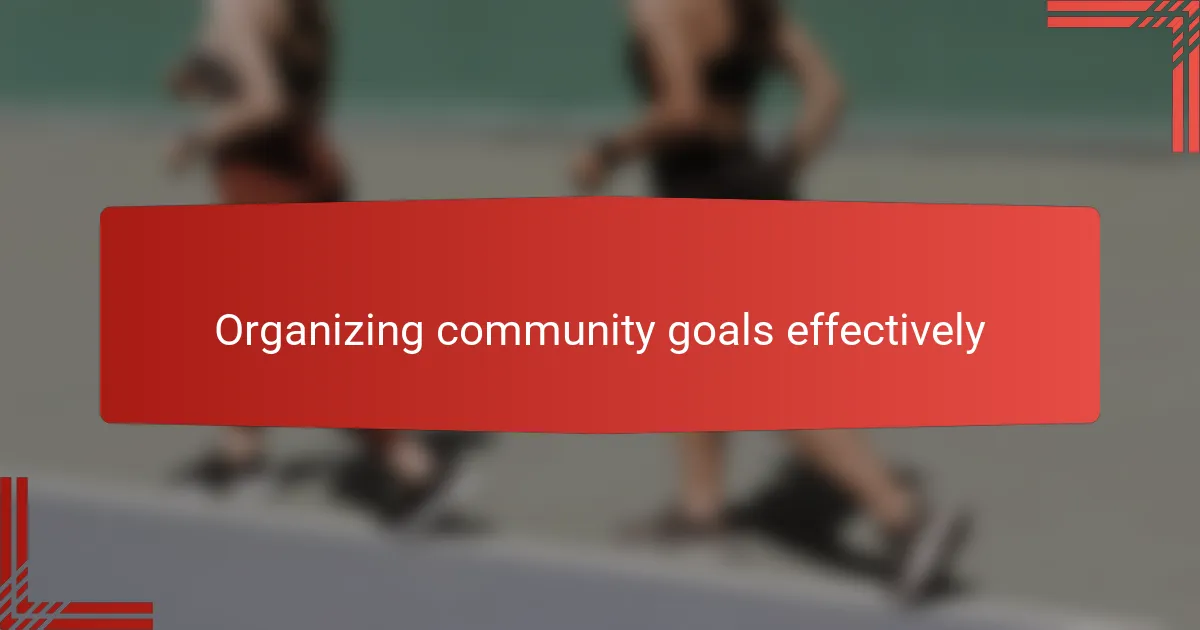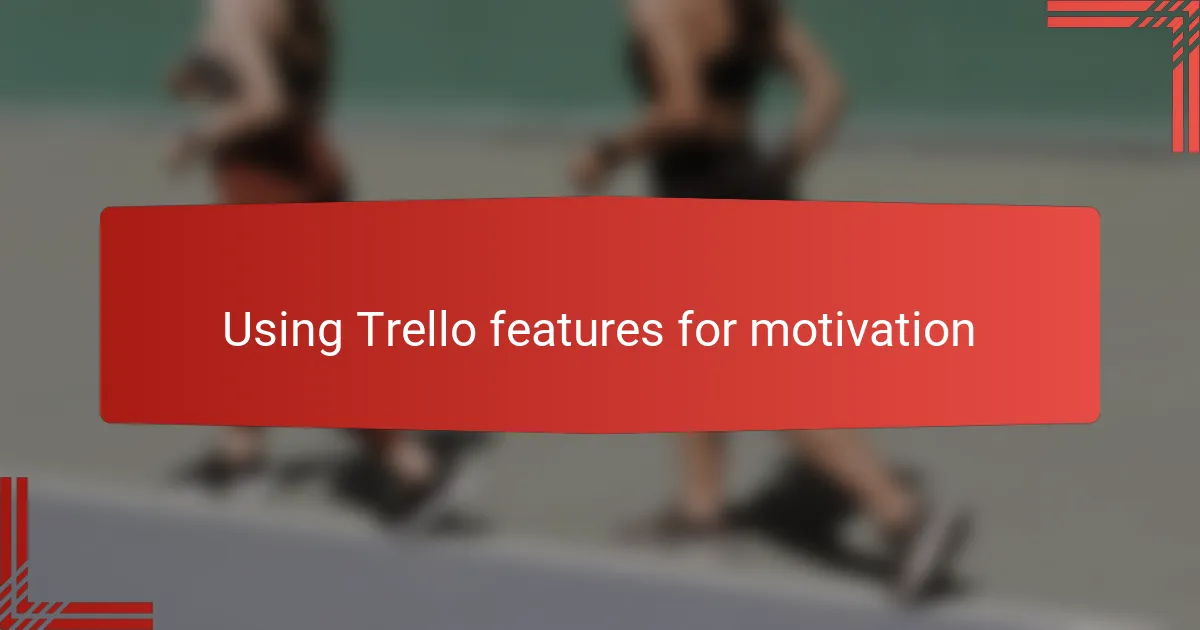Key takeaways
- Goal tracking in coaching enhances accountability and motivation by visualizing progress and identifying patterns.
- Trello transforms abstract goals into manageable tasks through customizable boards, encouraging client engagement and ownership.
- Effective organization of community goals fosters clarity and transparency, leading to increased engagement and collective success.
- Trello features like labels, due date reminders, and visual progress tracking significantly boost motivation and turn goal-tracking into a rewarding experience.
![]()
Understanding goal tracking in coaching
Goal tracking in coaching is more than just ticking boxes; it’s about creating a clear path toward meaningful change. I’ve found that when clients see their progress laid out, it fuels their motivation and keeps them accountable. Have you ever felt stuck because you couldn’t see how far you’ve come? That’s exactly why tracking matters.
When coaching someone, I often notice how tracking goals uncovers patterns we might miss otherwise. It’s almost like shining a flashlight in a dark room — suddenly, obstacles and opportunities become visible. This clarity helps both coach and client adjust plans with confidence, rather than guessing what might work.
Tracking also turns intangible dreams into concrete steps. I remember a client who was overwhelmed by a big life goal. Breaking it down and watching each small win accumulate brought a powerful sense of accomplishment. Isn’t that what we all need – a way to celebrate progress and keep moving forward?

Introduction to Trello for coaching
Trello has been a game-changer for me in coaching because it turns abstract goals into visual, manageable boards. I remember feeling overwhelmed before using it, but once I started organizing tasks in Trello, the path to progress suddenly seemed clearer. Have you ever tried tracking goals on paper and ended up losing focus? That’s where Trello’s digital approach really stands out.
What I appreciate most about Trello is its flexibility—each board, list, and card can be tailored to fit any coaching style or client need. This adaptability makes it easy to break down complex objectives into bite-sized actions, which feels less daunting. From my experience, seeing those cards move from “To Do” to “Done” is incredibly motivating—for both me and my clients.
Trello also fosters collaboration in coaching sessions. I’ve often shared boards with clients, giving them a sense of ownership in their journey. This interactive element deepens accountability, as clients update their progress in real time. Isn’t that kind of engagement exactly what drives lasting change?
![]()
Setting up Trello for goal tracking
The first step I take when setting up Trello for goal tracking is creating a dedicated board solely for the client’s goals. This keeps everything focused and prevents distractions. Have you ever tried juggling multiple lists everywhere and ended up more confused? That’s why a clean, goal-specific board is a game-changer.
Next, I organize the board into clear lists that represent the stages of progress – typically “To Do,” “In Progress,” and “Completed.” From my experience, this simple structure provides a satisfying visual cue as tasks move along. It’s like giving each step a little spotlight, making progress tangible and motivating.
Finally, I add detailed cards for each goal or subtask. I’ve found that including deadlines, checklists, and notes on these cards helps both me and the client stay aligned on expectations. Don’t you agree that breaking goals into bite-sized actions makes the journey less overwhelming? In Trello, these small cards become powerful markers of achievement.

Organizing community goals effectively
When organizing community goals effectively, I’ve learned that clarity is everything. When each goal is clearly defined and placed into a shared Trello board, it becomes easier for everyone to see where they fit in the bigger picture. Have you ever been part of a group where the purpose felt fuzzy? That confusion quickly vanishes with clear organization.
I also noticed how breaking community goals into smaller, actionable tasks fosters more engagement. It’s rewarding to watch members move a card from “In Progress” to “Completed,” knowing each step pushes the community closer to its vision. There’s something powerful about making collective progress visible—it builds momentum and a real sense of unity.
Another key insight is the importance of transparency in goal tracking. When goals and timelines are open to everyone, it creates accountability without pressure. From my experience, communities thrive when members can track their own contributions alongside others’, turning individual efforts into a shared success story. Doesn’t that kind of openness invite everyone to step up?

Using Trello features for motivation
One Trello feature I use to boost motivation is the “Labels” system. By color-coding tasks based on priority or theme, I can quickly spot which goals need urgent attention, creating a subtle yet powerful push to tackle high-impact actions first. Have you ever noticed how simply seeing things organized by importance helps you focus better? That’s the kind of nudge Trello gives me every time I open a board.
Another motivational boost comes from the “Due Date” reminders. When I attach deadlines to cards, the gentle alerts create a sense of healthy urgency. I’ve seen clients transform from procrastinators into action-takers just by having their goals pop up in front of them at the right moment. Isn’t it amazing how a simple reminder can spark that burst of energy needed to keep moving?
I also rely on the visual satisfaction of moving cards across lists in Trello. Watching a task glide from “To Do” to “Completed” never gets old—it’s like a mini celebration each time. From my experience, this tactile sense of progress fuels motivation far more than just checking off a box on paper. Have you ever felt that rush of accomplishment when you see your hard work physically reflected? That’s the magic I harness with Trello features.
![]()
Tracking progress and milestones
For tracking progress and milestones, I rely heavily on Trello’s visual cues. Moving a card from “In Progress” to “Completed” is more than just a task update—it feels like a mini victory. Have you ever noticed how seeing tangible progress can boost your confidence and keep you invested? That’s the power of a milestone clearly marked.
I also use Trello’s checklist feature within each card to break down bigger goals into smaller, manageable steps. Watching those tiny boxes get checked off one by one gives a real sense of accomplishment. It’s incredible how these small wins create momentum, especially when a client is feeling overwhelmed or stuck.
Sometimes, I add milestone labels or due dates to highlight key achievements along the way. When clients see these important markers, it shifts their focus from just finishing tasks to celebrating meaningful stages. Don’t you think recognizing progress like this makes the journey not only easier but also more rewarding? From my experience, this approach turns goal-tracking into a motivating story rather than a boring to-do list.